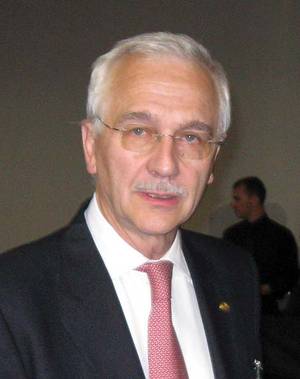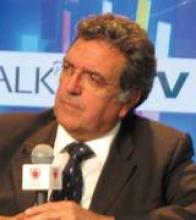"When you compare the new generation of drug-eluting stents with the first generation, there is a significant improvement in safety. The limitation of drug-eluting stents was stent thrombosis, and we see with the new generation that this disappears," commented Dr. Jean Fajadet, codirector of the interventional cardiology unit at the Pasteur Clinic in Toulouse, France, and president of the European Association of Percutaneous Cardiac Interventions.
"What is important [in this trial] was the all-comer population. With the second-generation drug-eluting stents we see reduced restenosis and need for repeat revascularization and, at the same time, better safety. That is really important. This is one more step to lead interventionalists to be more aggressive in using drug-eluting stents in STEMI patients. But whatever drug-eluting stent is used, what’s also important is the patient’s tolerance of dual-antiplatelet therapy," said Dr. Fajadet in an interview.
He recommended more liberalized use of everolimus-eluting stents in STEMI patients who are well suited to remaining on dual-antiplatelet therapy for a year, while taking a more cautious approach in patients who are poor candidates for prolonged dual-antiplatelet therapy. A good candidate would be a STEMI patient who is relatively young – in his or her 50s or 60s – has no know comorbidities, and gives negative answers to a series of questions in the emergency room: Do you have a history of gastrointestinal bleeding, a history of cancer, a history of stroke, or an allergy to aspirin, and do you have any planned major surgery?
A patient who answers yes to one or more of these questions, or someone who is more than 75 years old or has comorbidities is less likely to reliably stay on dual-antiplatelet therapy for a year and probably should not receive an everolimus-eluting stent for an acute STEMI, Dr. Fajadet said.
The EXAMINATION trial ran at 12 centers in Spain, Italy, and the Netherlands, initially enrolled 1,498 patients, and had 1-year follow-up on 98%. The patients averaged 62 years old, and about 83% were men. More than 80% of the patients entered the study within 12 hours of the start of their STEMI, although enrollment was allowed up to 48 hours after the onset. Compliance with the daily aspirin and clopidogrel regimen during the first year following stenting ran 95% in the patients who received an everolimus-eluting stent and 90% among the patients who received a bare-metal stent. During the 1-year follow-up, the rates of cardiac death and MI were similar in the two subgroups, but for the secondary end point of need for a repeat target lesion or target vessel revascularization procedure, the patients who received the everolimus-eluting stent had, as expected, a significantly reduced rate, compared with patients who received a bare-metal stent. The target lesion revascularization rate was an absolute 2.9% lower and the target vessel rate was an absolute 3.1% lower with drug-eluting stents, compared with bare-metal stents, Dr. Sabaté reported.
EXAMINATION was supported by the Spanish Heart Foundation, which received an unrestricted grant from Abbott, the company that markets the everolimus-eluting coronary stent (Xience V). Dr. Sabaté said that he did not have any disclosures. Dr. Wijns said that any consulting fees or honoraria he receives go directly to the Cardiovascular Research Center, which has performed contracted research for numerous firms, including AstraZeneca, Bristol-Myers Squibb, Eli Lilly, GlaxoSmithKline, Abbott Vascular, Biotronik, Boston Scientific, Cordis, Johnson & Johnson, Edwards, Medtronic, and St. Jude. The Cardiovascular Research Center also cofounded Cardio BioSciences. Dr. Steg said that he has received speaking or consulting honoraria from numerous drug and device companies including AstraZeneca, Bayer, Medtronic, Merck, Pfizer, Roche, and Sanofi-Aventis; that he is a stockholder in Aterovax; and that he has received a research grant from Servier. Dr. Fajadet said that he had no disclosures.



